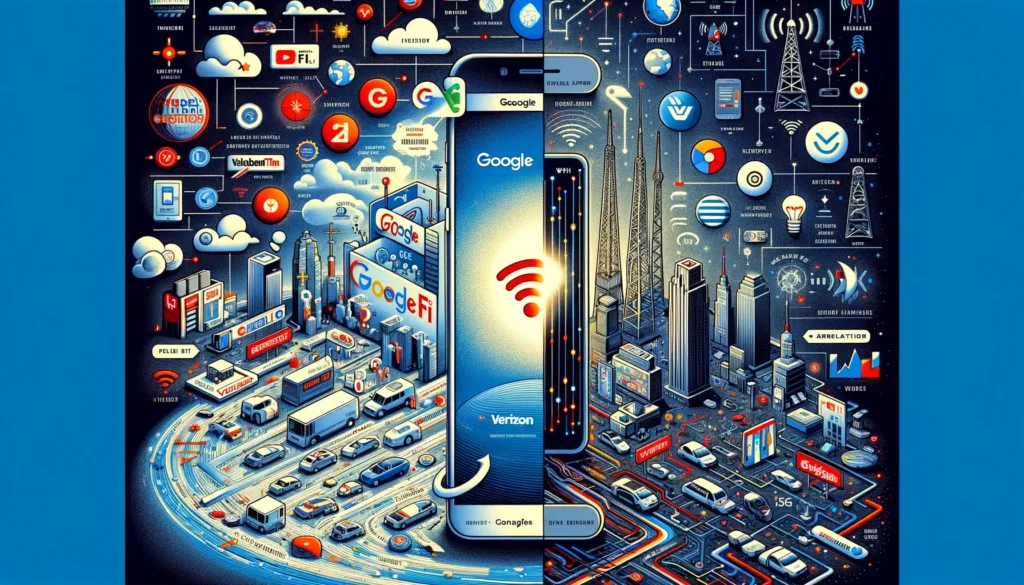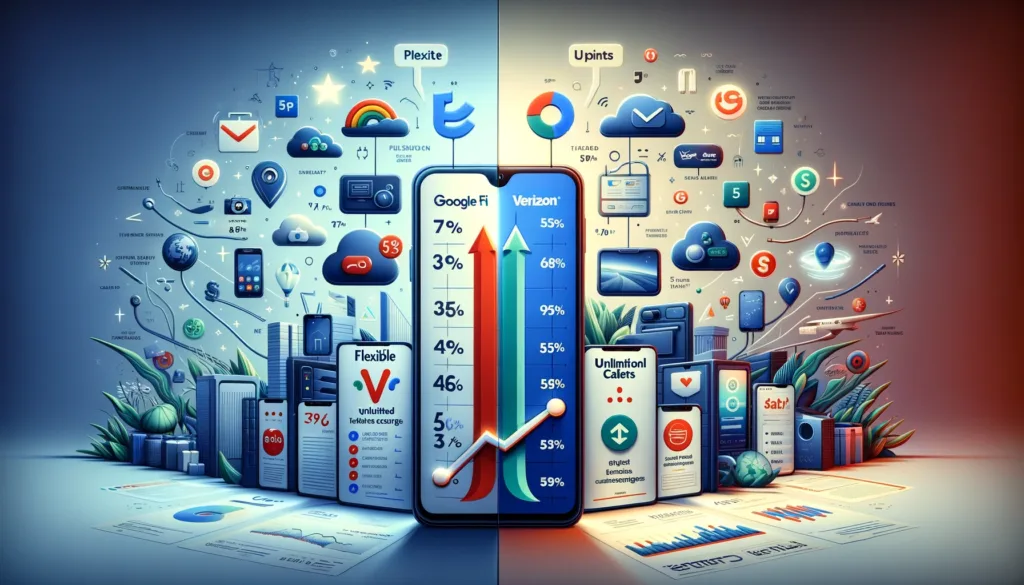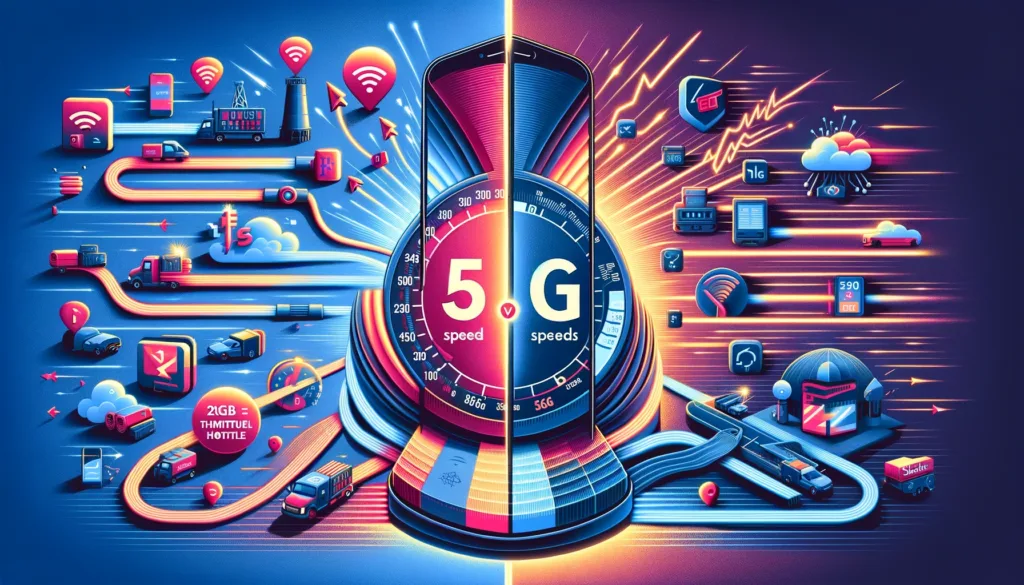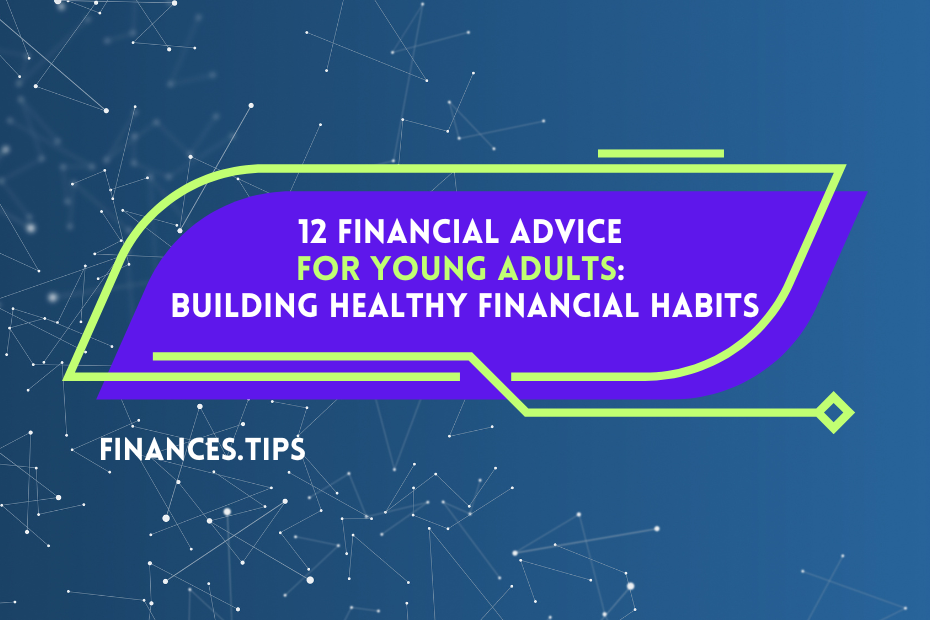This article gets into a detailed comparison between Google Fi vs Verizon, two giants in the telecommunications field.
In the competitive world of mobile networks, choosing the right service provider can significantly impact your daily life.
By examining their service coverage, plans and pricing, data speeds, international use, and customer service, we aim to provide an insightful analysis to help you decide which provider best suits your needs.
Whether you’re a globe-trotting adventurer in need of constant connectivity or someone who prioritizes network reliability and speed, understanding the nuances of Google Fi vs Verizon could lead you to make an informed decision.
Google Fi vs Verizon History and Background

Google Fi, formerly known as Project Fi, was introduced by Google in 2015.
It emerged as an innovative MVNO (Mobile Virtual Network Operator) that uses intelligent technology to switch between multiple cellular networks and Wi-Fi to provide optimal service.
Google Fi’s approach to telecommunications challenges traditional models by offering simplified billing and international roaming at no extra cost.
Verizon, on the other hand, stands as one of the largest and oldest telecommunications companies in the United States.
Founded in 1983 as Bell Atlantic, Verizon has grown through mergers and acquisitions to become a dominant player in the industry.
Known for its extensive network coverage and reliability, Verizon has continuously invested in advanced technologies, including 5G, to enhance its services.
The evolution of these companies reflects broader trends in the telecommunications industry, where innovation and quality of service are paramount.
Comparing Google Fi and Verizon offers insights into how different business models and technological approaches serve diverse consumer needs.
Service Coverage and Network Quality

Google Fi leverages a unique approach to network coverage by utilizing three major cellular networks in the United States: T-Mobile, Sprint (now part of T-Mobile), and U.S. Cellular.
This multi-network strategy aims to ensure that subscribers always have access to the strongest signal available, whether they’re in urban centers or rural areas.
Additionally, Google Fi’s service extends to over 200 countries and territories for international use, with the same data rates as domestic usage, making it an attractive option for frequent travelers.
Verizon boasts one of the most extensive and reliable network coverages in the U.S., with a significant emphasis on its 4G LTE and 5G networks.
Known for its network quality, Verizon consistently ranks high in independent tests for speed and reliability.
This widespread coverage ensures that Verizon customers have access to fast and stable connections, even in areas where other providers’ signals may be weak.
When comparing Google Fi and Verizon in terms of network quality and reliability, it’s essential to consider your specific needs and location.
Verizon’s standalone network is unparalleled in coverage depth, especially in remote areas.
However, Google Fi’s network-switching capability can offer superior service in places where its partner networks are strong.
This makes Google Fi a compelling choice for those who live or travel frequently to areas covered well by its amalgamation of networks.
Here’s a comparison table outlining the current offers from Google Fi and Verizon:
| Feature | Google Fi | Verizon |
|---|---|---|
| Network | Utilizes multiple networks (T-Mobile, Sprint, and U.S. Cellular) for coverage | Utilizes its own extensive nationwide network |
| Plan Options | Flexible plans with pay-as-you-go data or unlimited data options | Traditional plans with tiered data options |
| International Coverage | Included with no extra cost in over 200 countries and territories | Offers international plans with varying costs |
| Data Speeds | Speeds may be reduced after a certain amount of high-speed data usage, but always available at 256kbps | Various plans offering different high-speed data thresholds |
| 5G Coverage | Offers 5G coverage where available, dependent on network partner availability | Offers extensive 5G coverage in many areas |
| Family Plans | Discounted rates for additional lines | Offers family plans with shared data options |
| Phone Selection | Compatible with a wide range of unlocked phones, including Google Pixel devices | Offers a variety of smartphones, including the latest models from popular manufacturers |
| Streaming Services | No specific streaming perks included | Some plans include free subscriptions to Disney+, Apple Music, or Discovery+ |
| Customer Service | 24/7 customer support via phone, chat, or email | 24/7 customer support via phone or chat |
These are some of the key differences between Google Fi and Verizon in terms of their current offers.
Ultimately, the best choice depends on individual needs and preferences, such as coverage area, data usage, international travel, and device compatibility.
Here’s a comparison table highlighting the strengths and weaknesses of Google Fi versus Verizon:
| Feature | Google Fi | Verizon |
|---|---|---|
| Network | Good: Utilizes multiple networks for broader coverage Bad: May experience more frequent network handoffs Opinion: Offers versatility but may result in occasional connectivity issues | Good: Utilizes its extensive nationwide network for reliable coverage Bad: Limited to Verizon’s network, potentially lacking coverage in some rural areas Opinion: Provides reliable coverage but lacks the flexibility of multiple networks |
| Plan Options | Good: Flexible plans with pay-as-you-go data options Bad: Pay-as-you-go data can become costly for heavy users Opinion: Offers customization but may not be cost-effective for all users | Good: Traditional plans with tiered data options for predictable billing Bad: Limited flexibility compared to pay-as-you-go options Opinion: Provides simplicity but may not suit those with varying data needs |
| International Coverage | Good: Included international coverage in over 200 countries Bad: Speeds may be limited after a certain threshold Opinion: Great for travelers but may not provide consistent high-speed data abroad | Good: Offers international plans for travel outside the U.S. >Bad: Additional cost for international coverage Opinion: Provides options but can add to overall expenses for frequent travelers |
| Data Speeds | Good: High-speed data included with unlimited plans Bad: Speeds may be reduced after reaching a data usage threshold Opinion: Offers high-speed data but may throttle speeds for heavy users | Good: Various plans offering different high-speed data thresholds Bad: Some plans have data caps, limiting usage Opinion: Provides flexibility but can result in overage charges or reduced speeds |
| 5G Coverage | Good: Offers 5G coverage where available Bad: Availability dependent on network partner coverage Opinion: Provides access to emerging technology but may not be widely available | Good: Extensive 5G coverage in many areas Bad: Limited to select regions and cities Opinion: Offers advanced connectivity but may not be accessible everywhere |
| Family Plans | Good: Discounted rates for additional lines Bad: May not be as cost-effective for larger families Opinion: Offers savings for multiple lines but may vary depending on family size | Good: Offers family plans with shared data options Bad: Shared data may lead to overage charges for individual users Opinion: Provides convenience but requires careful data management for each user |
| Phone Selection | Good: Compatible with a wide range of unlocked phones Bad: Limited selection of exclusive devices Opinion: Offers flexibility but may lack access to the latest flagship models | Good: Offers a variety of smartphones, including the latest models Bad: Limited compatibility with unlocked devices Opinion: Provides access to popular devices but may not support all devices |
| Streaming Services | Good: No specific streaming perks included Bad: Lacks entertainment incentives compared to competitors Opinion: Focuses on core services without additional frills | Good: Some plans include free subscriptions to Disney+, Apple Music, or Discovery+ Bad: Limited to select plans, potentially excluding certain subscribers Opinion: Adds value for entertainment enthusiasts but may not be available to all customers |
| Customer Service | Good: 24/7 customer support via phone, chat, or email Bad: Limited in-person support options Opinion: Offers convenient access but lacks face-to-face assistance | Good: 24/7 customer support via phone or chat Bad: Limited support channels compared to some competitors Opinion: Provides reliable assistance but may not cater to all communication preferences |
These comparisons highlight the strengths and weaknesses of Google Fi and Verizon, allowing consumers to make informed decisions based on their priorities and preferences.
Plans and Pricing

Google Fi offers a straightforward and flexible pricing model.
Its plans are designed to cater to various user needs, from light data users to heavy streamers.
The “Flexible” plan starts with a low base rate for unlimited calls and texts, adding a charge for data used up to a certain cap, after which data is free.
For those with higher data needs,
Google Fi’s “Unlimited” plan provides unlimited data, calls, and texts, along with additional benefits like free international calls to specific countries.
Verizon, with its wide array of plans, caters to a diverse customer base.
From single-line plans to family plans, Verizon offers options that include unlimited data, talk, and text, as well as tiered data plans for those with less intensive data needs.
Verizon’s plans also come with perks such as access to their 5G network, streaming service subscriptions, and cloud storage, depending on the plan selected.
Comparing Google Fi and Verizon on pricing, Google Fi’s strength lies in its simplicity and cost-effectiveness for moderate data users and international travelers.
In contrast, Verizon’s plans, although potentially more expensive, offer extensive perks and the assurance of widespread network coverage, especially for heavy data users and those who prioritize network reliability above all.
Data Speeds and Limitations

Data speeds are crucial for streaming, browsing, and downloading, impacting overall user satisfaction.
Google Fi users typically experience speeds that reflect the capabilities of the underlying network they are connected to at any given time.
Since Google Fi switches between T-Mobile, Sprint, and U.S. Cellular, data speeds can vary but generally offer competitive LTE speeds.
For its part, Google Fi does not explicitly throttle data speeds until a user reaches 22GB on the Unlimited plan, at which point they may experience slower speeds during times of high network congestion.
Verizon is renowned for its fast LTE and advancing 5G networks, offering some of the highest data speeds available in the market.
Verizon’s 5G Ultra Wideband network, available in select areas, promises revolutionary speeds and reduced latency for compatible devices.
However, similar to most providers, Verizon may prioritize data usage, leading to reduced speeds in congested areas, especially after reaching certain thresholds on unlimited plans.
When comparing Google Fi and Verizon based on data speeds and limitations, the choice often boils down to network availability and the type of usage.
Verizon’s edge in 5G technology makes it a preferable choice for users in 5G-covered areas seeking the fastest speeds.
Meanwhile, Google Fi offers a reliable and consistent experience for users primarily within its partner networks’ coverage areas, with the added flexibility of not having to commit to one network.
International Use and Roaming

For international travelers, the ability to use your phone abroad without exorbitant fees is a significant consideration.
Google Fi shines in this category, offering easy international use in over 200 countries with no extra charge for data usage and text messages, and affordable rates for calls.
Data speeds while roaming internationally with Google Fi are decent, ensuring that travelers stay connected without seeking local SIM cards or Wi-Fi constantly.
Verizon offers international service options through its TravelPass, which allows users to take their domestic talk, text, and data allowances to more than 185 countries for a daily fee.
Verizon also offers monthly international plans for frequent travelers, which can be more cost-effective than per-day rates.
However, the overall cost for international use with Verizon can quickly add up, making it less appealing for those who travel internationally regularly.
Comparing Google Fi and Verizon in terms of international use and roaming, Google Fi is the clear winner for those who travel internationally frequently, offering straightforward and affordable connectivity.
Verizon, while providing comprehensive international coverage, tends to be more suitable for short trips or occasional travel due to its higher cost structure.
Customer Service and User Experience

Customer service and overall user experience are critical factors in choosing a mobile service provider.
Google Fi is known for its innovative approach not only to network service but also to customer support.
With 24/7 access to customer service through chat, phone, or email, Google Fi aims to resolve issues promptly.
The simplicity of its service and billing also contributes to a positive user experience, with many users praising the ease of managing their accounts and services.
Verizon has a vast customer service network, including phone support, online chat, and physical stores, providing multiple avenues for support.
While it offers extensive resources, some users report mixed experiences with customer service, which is not uncommon for large companies.
However, Verizon’s commitment to customer satisfaction is evident in its continuous efforts to improve service and support channels.
In comparing Google Fi and Verizon regarding customer service and user experience, it’s essential to consider personal preferences and priorities.
Google Fi offers a more streamlined and digital-first approach, which may appeal to tech-savvy users, while Verizon provides a traditional and comprehensive support system, potentially offering a sense of security to those who prefer in-person assistance.
Conclusion and Recommendations
Choosing between Google Fi and Verizon depends on individual needs, including network coverage, data usage, international travel frequency, and customer service preferences.
Google Fi offers an excellent option for moderate data users, international travelers, and those seeking simplicity in billing and customer support.
Verizon, with its extensive network coverage and speed, especially in 5G, caters to heavy data users and those who prioritize network reliability.
In conclusion, carefully consider your specific requirements and usage patterns before making a decision.
Both Google Fi and Verizon have their unique strengths, making them suitable for different types of users.
This comprehensive analysis of Google Fi vs Verizon is tailored to provide an in-depth comparison to help you make an informed decision based on your mobile connectivity needs.



